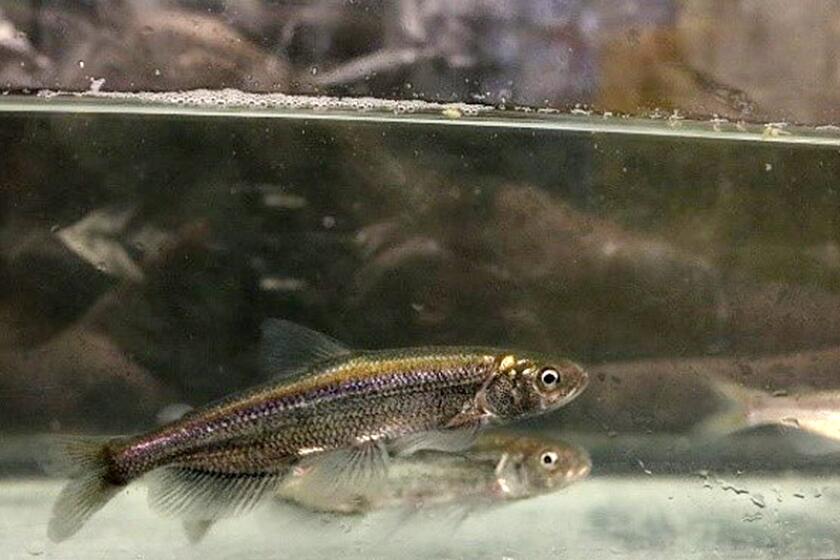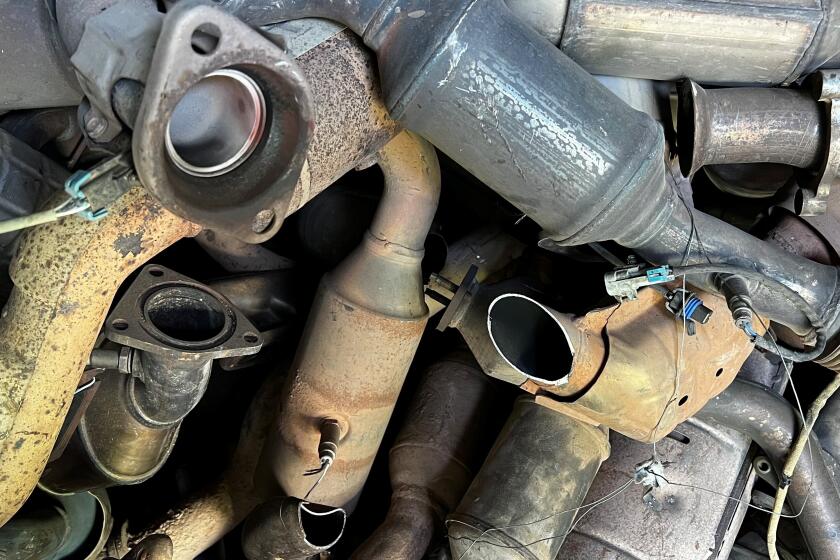THE FUZZINESS FACTOR
- Share via
Paul Edleman wants to build a system of roads, bridges and tunnels across Los Angeles that would never be used by a single car or truck. In 1989, after spending five years working as an environmental consultant for local developers, Edleman took a job documenting wildlife traffic patterns in L.A. urban areas; now he often finds himself facing down his former employers.
“Now my job is to protect intermountain wildlife corridors and the habitat areas within those boundaries,” says the 31-year-old Santa Monica Mountains Conservancy staff ecologist. He monitors a 250-square-mile area encompassing the Santa Monica Mountains, Simi Hills, Santa Susana Mountains and the Verdugo Range from the Santa Clara River to Point Mugu. Working with private citizens, conservation districts and state and national park officials, Edleman tries to dissuade developers from destroying corridors and trapping wild animals inside subdivisions. “Habitat linkages are extremely important to mountain lions, mule deer, American badgers, bobcats, gray fox and long-tailed weasels,” he says. “These animals face extinction if wildlife corridors are closed or blocked.”
Edleman, who has so far only been able to set up makeshift paths through culverts under highways, toured European wildlife corridors last summer. “Just outside Arnhem, Holland, an overpass as wide as a football field with 3 1/2 feet of dirt on top and tall, grassy berm along the edges was constructed over a heavily traveled highway. Now that’s the Cadillac of animal crossings.”
Once Edleman identifies an area vital to a target species, he locates the last places where animals can cross from one wildlife zone to another. “On the city side of Laurel Canyon, it’s down to the point where one or two more houses will do in the entire ecosystem.” Edleman would like to build his first bridge there. Also on his critical list is the area between Calabasas and Agoura where Liberty Canyon Road ends at the 101; many animals are killed trying to cross the freeway. “Between 1985 and ‘89, 52 mule deer, 6 bobcats, 74 coyotes and 5 gray fox, were stuck to the pavement.”
Edleman says officials often agree with him in theory; it’s simply a pocketbook problem. He hopes voters approve the L.A. County Park, Beaches and Recreation Act next November which would allocate $40 million to create permanent wildlife habitats and preserve corridors. In the meantime, Edleman offers a warning to new homeowners: “If you buy a house next to a wildlife area, you buy the wild animals who live in the area.”
More to Read
Sign up for Essential California
The most important California stories and recommendations in your inbox every morning.
You may occasionally receive promotional content from the Los Angeles Times.










